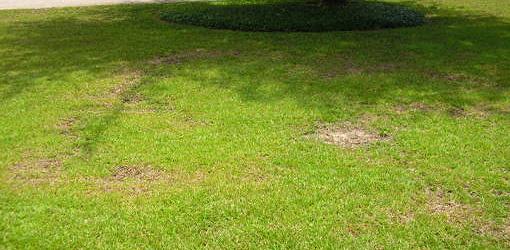Brown Patch Fungus Fescue Lawn
Brown Fungus Spots on the Grass. When a fungus spot shows up on your lawn, it typically means you have had a problem brewing for months. Brown spots are a common grass problem that have a few different potential causes. Understanding the type of fungal invader in a lawn can help a lawn gardener treat fungal problems and get rid of brown spots. Identification. Brown fungus spots on the grass can start as small eyesores, but they can quickly overtake a lawn if the conditions causing them are not remedied. NC-State-Univ.jpg' alt='Brown Patch Fungus Fescue Lawn' title='Brown Patch Fungus Fescue Lawn' />St. Augustine lawns are some of the most susceptible to fungal diseases. Bermuda grass is resistant to fungal disease, but it can develop brown patch fungus spots under the right conditions. Causes. Types of fungal lawn problems that cause brown spots in a lawn include the brown patch grass disease, take all root rot and dollar spot disease. Brown patch grass disease occurs in a circular area, with brown spots that are usually between 3 and 1. Take all root rot has spots similar to brown patch, but the spots are more yellowish in color. A distinctive characteristic of take all root rot is the appearance of black spots on grass leaves after the disease has progressed for a while. Etka 7 4 Keygen there. Dollar spot disease has smaller spots, normally under 6 inches in diameter. Brown Patch Fungus Fescue Lawn' title='Brown Patch Fungus Fescue Lawn' />Causes. Install Windows 2000 In Dosbox Fullscreen on this page. The fungal problems that cause brown patches in grass start with warm, wet weather, and poor watering and mowing practices. To reduce the chance that a lawn will develop brown patches, only mow the lawn when it is dry. Mowing a wet lawn with this problem will spread the disease through the whole lawn. Prevention. The best way to prevent brown fungus spots on the grass is proper care of the grass. Mowing grass to the optimal height for its variety helps the grass defend itself against invaders. Water early in the morning to give the lawn a chance to dry before the cool parts of the evening. Supervise watering to ensure that the lawn is not over watered. Misconceptions. Drought and fertilizer burn are other lawn problems that can look like fungus spots on the grass. To determine whether lawn spots originate from fungus or from other causes, consider the lawn environment and recent weather. If weather recently has been wet and warm, chances are good that the brown spots came from a fungal invader. If weather recently has been dry or if the lawn received fertilizer before it developed brown spots, the cause of the spots in the grass may not be a fungus. Brown Patch Fungus Fescue Lawn' title='Brown Patch Fungus Fescue Lawn' />Recovery. If a fungus spot appears in the grass, treating the damage with fungicide gives the lawn a chance to recover the next active season. Even treated grass does not recover from brown patchy fungus quickly, though. Captain Tsubasa 2 Nes Hack more. If the grass needs to be fixed immediately for aesthetic reasons, the affected grass should be cut out from the lawn completely and replaced with new sod. Brown Patch Fungus Fescue Lawn' title='Brown Patch Fungus Fescue Lawn' /> Insects and Your Lawn Go Handinhand. Insects have gotten a bad rap over the years and it seems like whenever we see one of the little crawly things we run. SCarolinaCoast posted 25 July 2006 1538 I have a maturelush St. Augustine yard that is green on the top but shows browndead grass at root base. This happens. Heat Wave, turftype tall fescue, a blend of the new generations fescue grass seed. Heat and drought tolerant fescue with superior performance in sun or shade.
Insects and Your Lawn Go Handinhand. Insects have gotten a bad rap over the years and it seems like whenever we see one of the little crawly things we run. SCarolinaCoast posted 25 July 2006 1538 I have a maturelush St. Augustine yard that is green on the top but shows browndead grass at root base. This happens. Heat Wave, turftype tall fescue, a blend of the new generations fescue grass seed. Heat and drought tolerant fescue with superior performance in sun or shade.